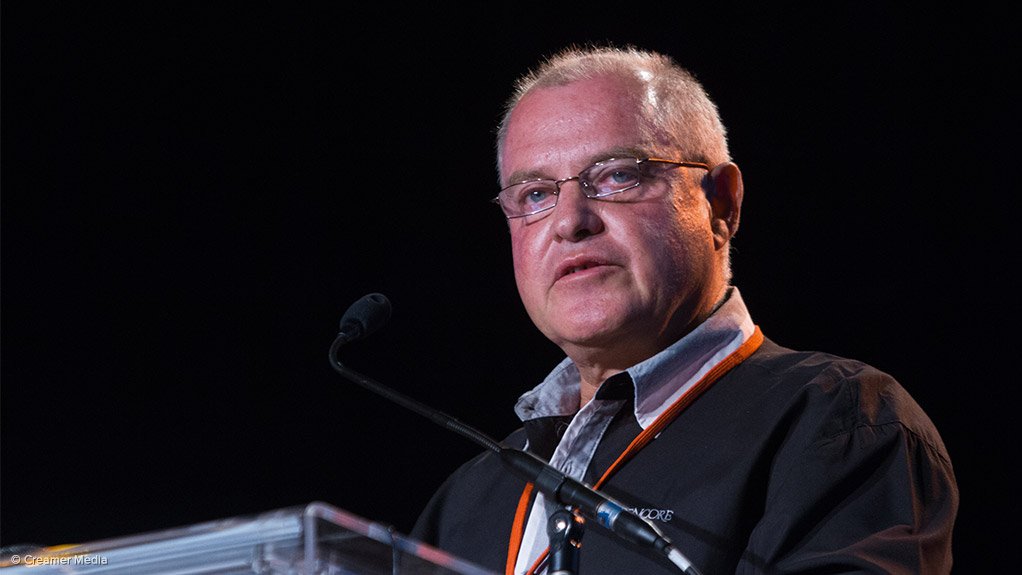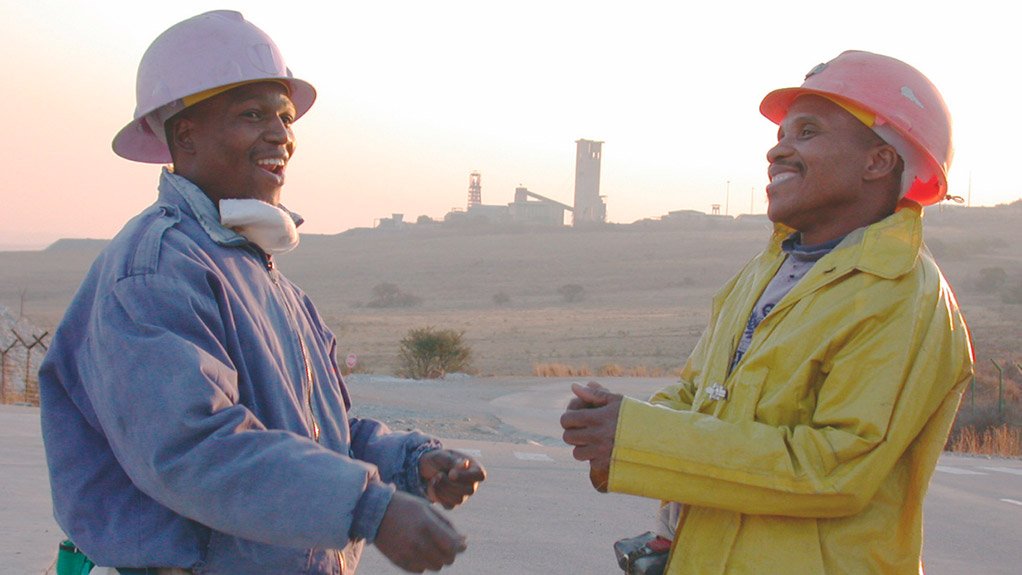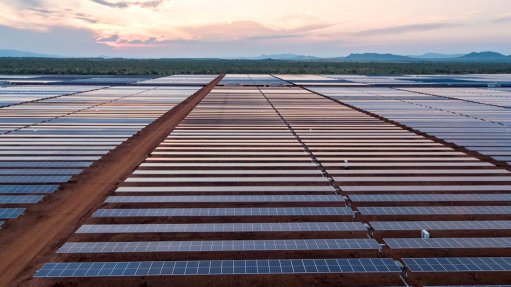Glencore Coal shares its health and safety guidelines



FLIP KRITZINGER Glencore launched the Safe Work Programme in 2009 to ensure a safe work environment for employees
RIGHT TO REFUSE Glencore Coal empowered its employees to have the courage to make the right choices such as refusing to undertake unsafe tasks
Diversified mining major Glencore revealed the measures it had implemented to achieve improved health and safety standards at its coal mines in South Africa at the 2015 Coalsafe conference, which was held in Johannesburg last month.
In January, Mineral Resources Minister Ngoako Ramatlhodi lauded Glencore Coal for being one of the few mining companies in the country that had gone for more than 12 months without recording a fatality.
The other companies are Northam Platinum, De Beers, BHP Billiton, Anglo Thermal Coal, Total Coal South Africa, Kuyasa Mining, Coal of Africa, Eskom, Ingula Pumped Storage, Lafarge, PPC, AfriSam, Alexkor, Petra Diamonds and Trans Hex Mining.
During his presentation, Glencore Coal GM Flip Kritzinger said that the company had at least one mine fatality a year from 2002 to 2009; this prompted the launch of the Safe Work Programme towards the end of 2009 to ensure a safe work environment for employees.
“Although we always recognised that health and safety, as well as the environment in which we operated, were very important, our record showed that we had to do something major. . . ”
The first element of the programme entailed Glencore’s developing a set of “robust” rules and identifying 12 fatal hazard protocols, based on the company’s own health and safety regulations. The protocols were undertaken in conjunction with national legal requirements.
Kritzinger said the second element, associated with these protocols, was the development of nine life-saving behaviours for employees in the work environment.
The third element focused on empowering employees to have the “courage to make the right choices”, which included being made aware of having the right to refuse to undertake unsafe tasks.
“And every Glencore employee is now well aware of this right,” stated Kritzinger.
Glencore stressed that if employees or mine management breeched any of the life-saving codes of conduct, there would be consequences. This comprised the fourth element.
Roll-Out
Firstly, Glencore worded its life-saving behaviours very positively, Kritzinger said.
“We also linked these behaviours with the protocols to ensure that an employee who was exposed to any type of fatal hazard would know exactly which . . . behaviour to associate with the corresponding protocol.”
The programme was rolled out in two phases, with the first phase having dealt with the formal risk assessments and processes that had to be followed in terms of the protocols.
Phase two established issue-based risk assessments, management plans, procedures, standards and forms to support the fatal hazard programme after discussions with representatives from Glencore’s collieries.
Kritzinger emphasised that this process was very important and took almost a year to complete.
“The team training process was also one of the most important aspects of the process, as different sets of teams came together to identify all the major fatal hazards in the work environment.”
He noted that the teams had also indentified all the controls and life-saving behaviours associated with these fatal hazards, after which they agreed to comply with the controls.
Further, Kritzinger added that Glencore had offered employees the opportunity to discuss this programme with their families and provided the mineworkers with a commitment book to help explain to their families what the programme entailed.
“Therefore, we believe this process was an inclusive one, and a key driver in ensuring its success,” he enthused.
Glencore had also rolled out two other initiatives that supported the programme, each raising mine health and safety awareness on site, Kritzinger added.
Two fatalities at one of its underground operations, in early 2010, necessitated the implementation of the High-Risk Work Process.
“During the enquiry, we. . . realised that there were several issues that had to be addressed, as our planning was not 100% correct and we did not address the correct safety items,” Kritzinger acknowledged.
Subsequently, Glencore formalised its meetings to allow for a window period of seven days to enable mine management and mining teams to discuss the activities of the following week.
“We particularly wanted to establish what the high-risk activities were, what sort of controls were needed. . . and who was going to verify that these controls were maintained,” he said.
Further, the company provided all its supervisory-level staff with a comprehensive Glencore communication system training programme to ensure that preshift meetings were properly conducted.
These meetings enable members to discuss whether any incidents from the previous shift had to be reported, what the key tasks for the upcoming shift were and the control mechanisms that would be used for any possible fatal hazards.
Kritzinger said the selection of clear goals and objectives – such as setting the goal to reduce the company’s injury rates by 50% and recording zero fatalities over a two-year period – and placing strong emphasis on maintaining that focus were critical to the Safe Work Programme’s success.
“We also had timelines [regarding] when we needed to complete and roll out the programme.”
He further stressed the importance of the company having in place stable management teams that could implement and entrench the processes in the workforce.
“It took us about three to four years to effectively get to where we are today, and this would not have been possible . . . without ensuring we got the buy-in of all our stakeholders,” Kritzinger concluded.
Comments
Press Office
Announcements
What's On
Subscribe to improve your user experience...
Option 1 (equivalent of R125 a month):
Receive a weekly copy of Creamer Media's Engineering News & Mining Weekly magazine
(print copy for those in South Africa and e-magazine for those outside of South Africa)
Receive daily email newsletters
Access to full search results
Access archive of magazine back copies
Access to Projects in Progress
Access to ONE Research Report of your choice in PDF format
Option 2 (equivalent of R375 a month):
All benefits from Option 1
PLUS
Access to Creamer Media's Research Channel Africa for ALL Research Reports, in PDF format, on various industrial and mining sectors
including Electricity; Water; Energy Transition; Hydrogen; Roads, Rail and Ports; Coal; Gold; Platinum; Battery Metals; etc.
Already a subscriber?
Forgotten your password?
Receive weekly copy of Creamer Media's Engineering News & Mining Weekly magazine (print copy for those in South Africa and e-magazine for those outside of South Africa)
➕
Recieve daily email newsletters
➕
Access to full search results
➕
Access archive of magazine back copies
➕
Access to Projects in Progress
➕
Access to ONE Research Report of your choice in PDF format
RESEARCH CHANNEL AFRICA
R4500 (equivalent of R375 a month)
SUBSCRIBEAll benefits from Option 1
➕
Access to Creamer Media's Research Channel Africa for ALL Research Reports on various industrial and mining sectors, in PDF format, including on:
Electricity
➕
Water
➕
Energy Transition
➕
Hydrogen
➕
Roads, Rail and Ports
➕
Coal
➕
Gold
➕
Platinum
➕
Battery Metals
➕
etc.
Receive all benefits from Option 1 or Option 2 delivered to numerous people at your company
➕
Multiple User names and Passwords for simultaneous log-ins
➕
Intranet integration access to all in your organisation




















